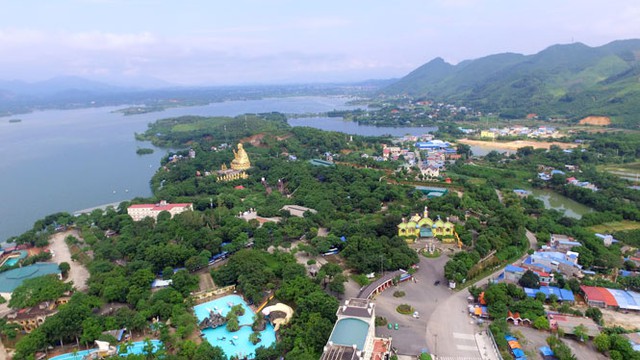
The Provincial People’s Committee of Thai Nguyen has recently issued a decision to establish 2 industrial clusters in Dai Tu district. Specifically, Quan Chu Industrial Cluster is planned with an area of 50 hectares. The fields of operation include: Supporting industry, high-tech industry, processing, manufacturing, warehousing services. The total infrastructure investment is 600 billion VND. The construction progress starts from 2024 and lasts until the end of 2027. Hoang Gia Thai Nguyen Real Estate and Infrastructure Development Joint Stock Company is assigned as the infrastructure investor.
Cat Ne – Ky Phu Industrial Cluster, planned area of 68 hectares. The total investment is over 796 billion VND. The construction progress starts from 2024 and lasts until the end of 2027. The investment sectors include: supporting industry, high-tech industry, processing, manufacturing, warehousing services. The infrastructure construction is carried out by Thai Nguyen Technical Infrastructure Development Joint Stock Company.
With these two industrial clusters, Dai Tu district now has a total of 6 industrial clusters with a total scale of 318 hectares. Previously, the locality had 4 industrial clusters with an area of over 200 hectares, including: An Khanh 1, Phu Lac 1, Phu Lac 2, and Ha Thuong.
Becoming a town before 2030
Dai Tu is a district located in the southwest of Thai Nguyen province. The district shares borders with Thai Nguyen city, Pho Yen and Phu Luong districts of Thai Nguyen province to the north and east. To the west, it borders Son Duong district, Tuyen Quang province. To the south, it borders Binh Xuyen district and Tam Dao district of Vinh Phuc province.
The entire district has a total area of 56,093 hectares with a current population of over 18,000 people. The transportation system includes National Highway 37 running through the district center. In addition, there are provincial roads such as Dai Tu – Ho Nui Coc route to Thai Nguyen city; Dai Tu – Pho Yen route; Dai Tu – Dinh Hoa route, and the road system connecting communes and towns that have been invested, renovated, and upgraded. This is also the district with the largest area of rice and tea in Thai Nguyen province.
Parallel to the goal of striving to meet the standards to become a centrally-run city by 2050 of Thai Nguyen province, through the Master Plan for Construction Planning of Dai Tu district, Thai Nguyen province by 2040, Dai Tu district aims to achieve new rural development standards and basic standards of a town directly under the province in 2025; become a town, a fourth-class urban area before 2030; and by 2040, raise the town standards.
The establishment of industrial clusters in accordance with the Construction Planning of Dai Tu district by 2040 has been approved by the Provincial People’s Committee. In which, the province has oriented the development of the southern region of the district (including Quan Chu town and communes: Cat Ne, Ky Phu, Van Yen, My Yen, Luc Ba, Binh Thuan, Khoi Ky, Hoang Nong, La Bang) towards urban development, agriculture, forestry, industrial clusters, commerce, services, cottage industry, historical tourism, community, experience, ecology associated with forest and nature preservation.




































